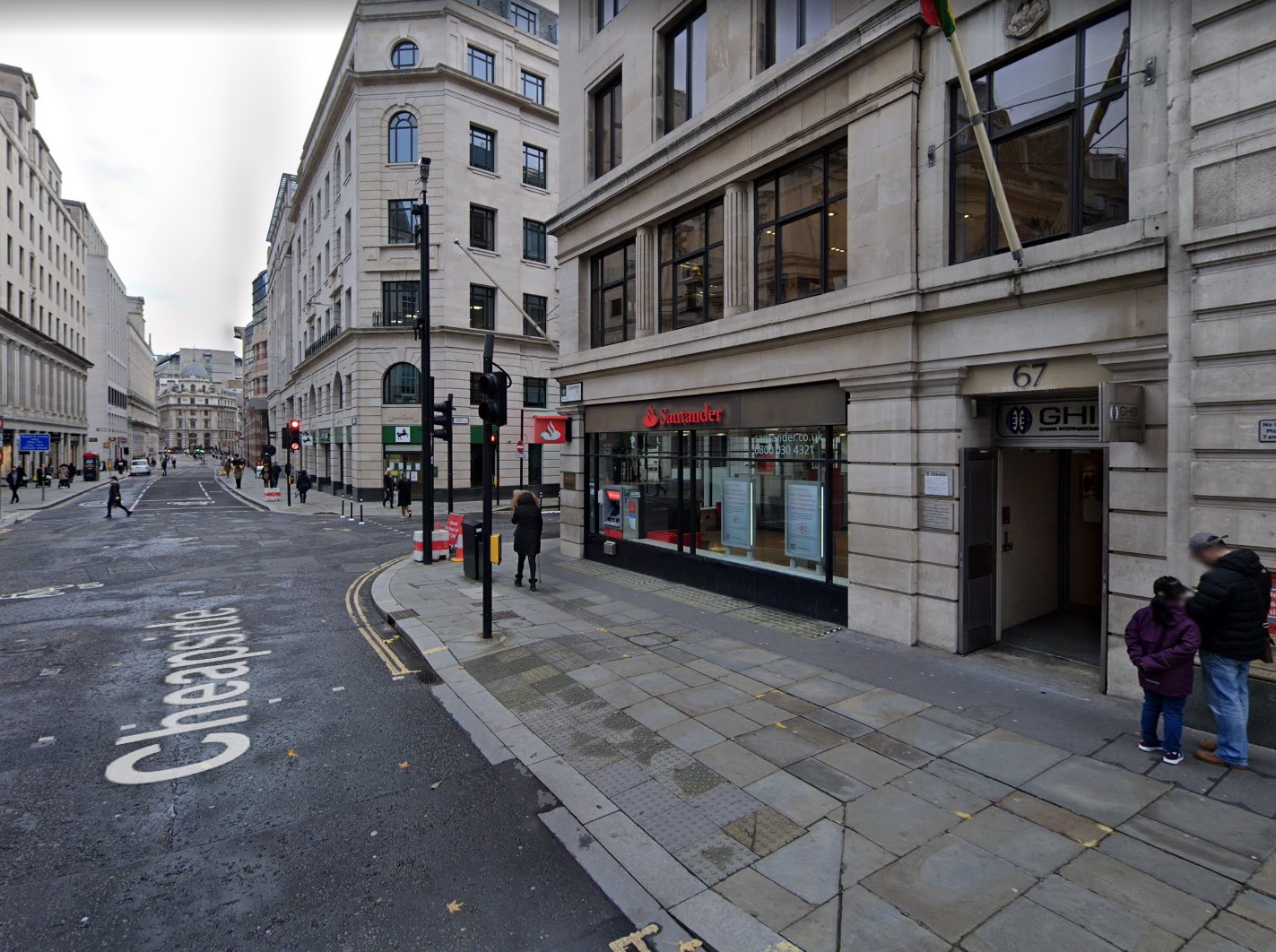
Senior Manager PMO
Ghana International Bank (GHIB), London
Directed GHIB’s largest-ever IT programme, including full infrastructure overhaul and revitalisation of the long-stalled Infrastructure project (hardware, software and datacentre migration). Led a team of 6 PMs managing diverse portfolios; improved governance, reporting, and project delivery capability. Drove regulatory alignment and digital readiness with vendors such as Temenos (T24 & TCIB), Backbase, and Finastra. Assisted executive team in technology roadmap and operational transformation, embedding lasting change.
Datacentre project
When I joined the bank, the datacentre project had been ongoing for 18 months, yet had made no tangible progress despite continuous financial outlay, a fully allocated internal team, and active involvement from external suppliers. Those familiar with such large-scale infrastructure projects understand the high cost of maintaining idle datacentre environments—networking, connectivity, equipment, and associated support contracts—without deriving any operational benefit. At the time, approximately half of the internal IT team was engaged in this effort in one form or another.
Our first priority was to identify and catalogue all services and applications in use across the organisation. Many were outdated and required either renewal of support contracts or full replacement. We meticulously mapped system dependencies and created a comprehensive architectural overview—something the bank previously lacked. The final phase involved implementing backup and resilience systems, giving us the assurance of a reliable fallback option. Fortunately, thanks to the team’s diligence, we never had to use it.
Within six months, we achieved measurable progress. By the end of the first year—longer than ideal but reasonable given the organisation’s maturity—we had a fully functional disaster recovery setup. This marked a critical milestone in meeting regulatory compliance. Previously, the bank had been operating with a single datacentre, which had once been down for over three days due to a fire. Six months later, we completed the migration to the new datacentre, establishing a mirrored secondary site to ensure redundancy.
Data Lake
Following the datacentre initiative, I joined the Data Lake project—part of the CTO’s strategic roadmap to enhance the bank’s IT services. However, we quickly assessed that both the organisation and its infrastructure were too immature to support a full ELT-based Data Lake solution. As a result, we pivoted to implementing a more foundational Data Warehouse using an ETL model.
The project was fully designed and resourced, both financially and in terms of personnel. Unfortunately, it was blocked before implementation could begin, stalling momentum and undermining a roadmap that had been approved at Executive Committee level.
Backbase
Collaborated with the Head of Transformation during initial supplier engagements and played a key role in initiating the project. While not directly managing delivery, I maintained oversight through regular check-ins and ensured accurate and up-to-date RAID logs across the project portfolio. A capable project manager from my team was assigned and led day-to-day execution.
Despite strong foundational planning and a delivery-ready platform, the project faced delays due to a shift in stakeholder priorities and the cancellation of critical testing phases. These changes limited opportunities to demonstrate the platform’s full potential. At the time of my departure, the project was technically sound for deployment but remained on hold pending strategic and technical alignment.
T-24
The T24 implementation was finally completed in April 2025—three years after initiation and delivered with an outdated version. This delay was emblematic of the broader delivery issues within the organisation. I had initially contributed to the project during the tender phase, reviewing documentation and technology options with the Head of Transformation and the Infrastructure Manager shortly after my arrival in 2021.
The three-year timeline for a project that should have taken months illustrates the same organisational challenges I encountered with the Datacentre project, and which I was unable to overcome in the Data Lake and Backbase projects—persistent resistance, delayed decisions, and disregard for Executive Committee directives.
Regulatory Reporting
The Regulatory Reporting upgrade had been repeatedly delayed, much to the CFO’s frustration. Originally planned as part of the Data Lake project (utilising Snowflake and Plateau), the blockages there forced a simplified interim solution. Despite ongoing internal challenges, the project was ultimately delivered successfully due to the dedication of both internal teams and external suppliers.
Processes review
Towards the end of my tenure, I focused on improving project management frameworks. The bank was inconsistently applying both Agile and Waterfall methodologies. I worked on implementing a hybrid approach better suited to the team and the bank’s needs, offering more structure and flexibility for future projects.
Leadership & Departure
Appointed to lead key transformation initiatives with a view to stepping into the Deputy Head of Transformation role, following a strong endorsement from the Head of Transformation. While a proposed departmental restructure was not adopted, I assumed many leadership responsibilities, including team management, representing the function at executive committees, and delivering critical projects through a period of strategic uncertainty.
Following the departure of both the Head and subsequently a newly appointed successor, I continued to lead the team and maintain momentum across the transformation portfolio. I was consistently recognised for my leadership, judgement, and ability to drive delivery in a complex regulatory and operational landscape.
Despite my contributions—particularly in helping the bank successfully emerge from Section 166 and VBR, safeguarding its licence and enabling future growth—it became clear that the organisation lacked a long-term vision aligned with sustainable transformation or personal progression pathways.
Having delivered significant impact, I made the considered decision to seek an environment with clearer strategic alignment and greater opportunities for growth, where I can continue to deliver meaningful and lasting change.
Skills & Experience
Team Leadership | Mentoring | Team Development | Project Management | Program Management | Portfolio Management | Waterfall | Agile | Hybrid Waterfall Agile | Project Management Office Framework Review | IT Infrastructure (hardware and software)
IT infrastructure: VMWare, Windows Server, Linux Server, SaaS, Cloud, Data Lake, Data Warehouse, Integration Layer, Azure, colocation, Dell Backup (Avamar appliance and cloud), IBM Power, Oracle, SQL, Power BI | GDPR | Compliance
Software: Temenos, Finastra, Backbase, Fintellix/Verisk Reporting, Swift, Core banking, Internet Banking, Open Banking (PSD2), Regulatory Reporting
Consultant / Snr Project Manager
Pension Insurance Corporation (PIC), London
Spearheaded the Atlas Programme, PIC’s largest technology transformation, across datacentre operations, security, and cloud networking. Reviewed and refined the Target Operating Model (TOM) to align IT capabilities with business growth and regulatory requirements. Designed and delivered high-speed (10Gb+) WAN and Azure ExpressRoute to enable regulatory compliance and remote work scalability. Negotiated and executed supplier transitions, including a new MSP, and led BA, risk, and governance frameworks. Delivered savings of £2m and laid the foundation for future automation and orchestration initiatives.
Note: The photo was taken by myself at the end of the day,
ATLAS
PIC is a privately held pension fund insurer and management company. When I joined the company it had a portfolio of around £10bn and when I left it had close to £40bn. This organic growth is uncommon and a dream for most companies but can place a lot of pressure on support services. The CTO (Alistair Roberts) wanted, rightly, to have a TOM that would enable and support this growth. And started the Atlas project that focused initially in the basic infrastructure, the support model and service delivery.
We moved the infrastructure out of the MSPs colocation location and into one that was owned by PIC instead making sure that we would have a direct contract with critical suppliers and managing risk in a more proactive manner. Alongside this we did the same with the network suppliers and enhanced both. The cost saving and direct contract made sure we had no lack of knowledge and control. PIC is a “cloud first” company and the physical infrastructure was to maintain legacy initially but we decided it could be to maintain agility within the support services and leveraging cloud services with local ones with the capacity to do what was needed.
Taking that into consideration we implemented a hybrid hyperconverged solution fully flash. Something that the CTO never thought we would be able to get within the budget and it was a result of negotiations with the suppliers and well run RFP. The CPU and storage was done and so was the backup solution with RTO and RPO agreed and implemented. A full security solution was also implemented with border firewalls and use the enhancements in networking to use the cloud for IAM. All of this had to be complemented by a more capable connectivity. We moved from a 100Mbps internet connection for the head office and 1Gbps connectivity to the MSPs colocation to a full dark fibre connectivity between the datacentres and the HQ and first lit at 10Gbps increasing 10 fold the connectivity, improving DR capabilities as we now knew where the cables were running on and not dependent on 3rd parties (the MSP) maintaining a much more robust adherence to Solvency II regulatory compliance and improve BCDR. As we also managed to do this and get a more robust solution than the one in use and with both less money than expected and with a lesser yearly cost we decided that we could also improve access to the main cloud provider with Azure Express Route with a couple of double 10Gbps links making sure that a 30% year data growth wouldn’t affect both the capacity nor the cost of maintaining a cloud solution. This enabled a more confident use of Azure and IAM on the cloud too.
The final part of this project was to use an MSP to just do the wrapper support service to the whole infrastructure complementing the in-house team and providing a dedicated 24/7 monitoring capability. This was then translated into a set of services provided to the business, and placed into an ITIL model with a CMDB being created and fed into a ServiceNow implementation that now reflected the new capabilities and services that could be provided and enable a much greater flexibility for changes. And I cannot offer more information as it is internal to PIC.
BCDR
Though we did increase enormously the flexibility and resilience of the IT services not all disasters are IT related… even if many seem to be. Covid was a good example of what can go wrong at the wrong time. In this case it came as we completed the Atlas project. Meaning there was a much more capable system in place, to cope with the working from home and remote access, as well as security and an entire support model that could keep business running and continue to expand if the market so allowed.
But before Covid hit and taking into consideration the enhanced capabilities of the new infrastructure a plan was put in place to improve the Business Continuity and Disaster Recovery plan and processes. IT was moved to the cloud (if there is a disaster we don’t want to have the “anti-disaster” documentation, information, communication plans, etc… in the potential disaster areas, right?). Reviewed the full process and documentation but more importantly we did something that usually afflicts most BCDR processes… we made sure that it was maintained, maintainable and easy to do so and included it as part of the operations process including onboarding, for example. As per before I will not expand on the information of the system as it is internal to PIC.
Skills & Experience
Team Leadership | Mentoring | Consulting | Project Management | Target Operating Model (TOM) | Service Delivery | Waterfall | IT Infrastructure (hardware and software) | BCDR | DPIA | GDPR | Compliance

Network Infrastructure Manager
Led IT network delivery across 29 sites, 3 datacentres, and 150,000+ network points; managed the IT component in annual capital programmes of £120M–£150M yearly. Built the Network Infrastructure Group and drove standardisation that informed industry-wide practices. Delivered the £3bn campus IT strategy (Imperial West) and played a key role in vendor partnerships, strategic procurement, and technology adoption. Acted on behalf of the Director of IT, ensuring executive-level coordination and oversight of IT initiatives.
Joining
When I first joined Imperial College, the University had just recently started centralising the support services. I was tasked with taking ownership of the Network Infrastructure. I went through an assessment phase and identified the following changes and why.
The majority of the changes yearly were done via Capital Investment projects. The University invested £120m-£150m yearly in new facilities or changes to older. Most had issues on delivery or delivered non compliant equipment or solutions to a large part of the estate. This created both an issue for the University as a whole and in particular to IT that had to spend a lot of resources to fix those problems and to be able to provide services that were lacking. This created a double financial loss (the initial investment and the correction), a loss in business stoppages and a really bad image of the IT department for the staff and students unaware of the reasons behind the IT problems.
a – Standards. These were written and split into the specific areas of the contracting firms working in the multiple projects to avoid complexity and confusion in the implementation of those same standards. These are still being updated and used to this day (around two decades): Network infrastructure | Administration and support services | Imperial College London
b – Collaboration. Based on easier to follow and understandable processes there was a closer interaction between Capital Investment, Estate Management, Project Management and IT leading to the inclusion of the team into all of the projects to assist and guide the Project Management team, the Design teams and the contractors when the projects were live. With a full sign off by ICT alongside the other departments.
c – Vendor management. Full comprehensive end to end vendor management and supply chain review. It was normal to have requests for new data points to take up to 3 months to deliver to the departments. Days and weeks for repairs to those. And many projects were stopped for lack of materials/equipment. We ended up with a 3h to 3 day repair and delivery time frames, special prices for Imperial as the manufacturers didn’t know where the materials were going to and realised the volume of business we were doing. We also worked with the distribution channels to have the materials and equipment available in stock for us. With the clarification of the standards there was also a focus on the right products and a continuous feedback to us.
d – Training. All new IT staff that would work in the 2nd line support was inducted and trained in the standards as part of the onboarding process. Continual training and testing facilities were created to both test new possible standards variations and updates and also for the training. We also had an onsite company that was fully conversant with the standards and provided feedback on them and would train their own operatives that would work and have facilities onsite.
Managing and developing
The team grew organically and so did the work that we were carrying out due to the success of the policies and changes implemented in the first years. Several departments that operated in isolation of IT realised that they were lagging behind and couldn’t hope to match the infrastructure being put in place and agreed to drop their objections to the centralised model. We also had an embedded team member in the Estates department to enable collaboration and coordination of works. It was eventually phased out as both departments grew and space was at a premium but it was replaced by further robust procedures to continue that close relationship.
Simultaneously we rationalised, simplified and at the same time enhanced, all our external links. At time of departure from Imperial we had 2x 20Gbps connectivity to the outside world and capability to go over 100Gbps and beyond without having to change any of our internal connectivity or equipment. We were running 10Gbps uplinks and applications that were sensitive to bandwidth requirements and 1Gbps to all clients as a minimum and unrestricted. This was in circa one decade ago (at the time of writing we are in 2025).
This enabled enhanced services to third parties working onsite or around us that depended on our network for connectivity.
We also managed to advise and work closely with the Imperial College NHS Trust, the largest in London and possibly the country, with mixed success. Where we had the lead or could influence the outcomes we managed to create a replica of the new network being put in place across the Academic side of the institution. But we couldn’t completely change the standards and work methodologies of the Trust. It is my hope today that they have developed it more fully as it was, as we found out, a fantastic way to have a robust service to the business, spend less money on the service of the very same system and increase user experience. in 2005 when I joined it was normal to have relatively long outages. When I left it would be strange to have outages. The vision transferred to myself and the team by my own manager (Matthew William) was of a network that “just works” and the teams went on to achieve this. It was/is a success story that is still tried to be replicated by others.
I was extremely lucky to have had amazing leadership at Imperial. My Manager and the director of ICT both allowed me space to grow and trusted my judgement. To the point I represented the department in the Capital Investment project (not only the £120m-£150m yearly but also the White City Campus investment and others that were a £3bn commitment from the University for the years to come to expand its academic and commercial businesses. I signed the Project Initiation Documents (PIDs) on behalf of the Director of ICT and the Department.
As a note, during my time at Imperial, several other organisations were looking at improving their own infrastructure and processes and looked at what we were doing and got in touch. Eventually the marked (contractors, suppliers, consultants, etc… ) not only started noticing but also spread the word and I was invited to speak to multiple companies with their senior leadership and also in public events. From Higher Education related to Datacentre events like the Data Centre Dynamics event at the Excel in London.
Skills & Experience
Team Leadership | Mentoring | Team Creation & Management | Consulting | Project Management | Program Management | Portfolio Management | Target Operating Model (TOM) | Vendor Management | Standards | Waterfall | IT Infrastructure (hardware and software) | Cabling | Channel Management | Service Now | Service Delivery | OLA & SLA | Oracle Financials | ITIL | LEAP (Leadership Excellence through Awareness and Practice) | Agile | Public Speaking

Project Manager
Concorde Logistics
Led a team conducting due diligence on a major support contract between CSC (now DXC Technology) and Renault, focused on asset discovery and assessment. The project involved evaluating the infrastructure of Renault’s mega data centres, in preparation for CSC assuming full management and support responsibilities.
Led due diligence for a high-value outsourcing contract between Renault and CSC (now DXC Technology), involving the transfer of operational control of Renault’s mega data centres in France and Spain. We deployed agents to discover assets within the datacentres, visited them to check how tagging and other operations were being done. This enabled SLAs, contractual terms, processes, and infrastructure assets for a deal valued at several hundred million pounds.
Skill & Experience
Team Management | Due Diligence | Outsourcing | Data centre Operations | Asset Discovery | Process Enhancement
Project Manager
Responsible for the move of the IT systems and environment for BP France from IBM BPO shared service centre in Paris (Versailles) to Lisbon. This was phase 2 of a project started previously under PwC (BTO) before IBM bought this part of the company. This was done by the same team that did phase 1 successfully.
We near shored the last services operating Global Ledger (GL) and Cash & Banking Operations (C&B) in the same lines we did before by checking current operations and systems and integrating them on the standardised environment I had created for the other services for BP France.
This was again successfully completed.
After an interval to carry out the BP project in Lisbon (to migrate the Head office to a new one in the outskirts of Lisbon), during which would be risky to carry out any major projects at IBM BPO, I returned to complete the data and systems transfer from Paris (Versailles) to Lisbon. The team that was so successful in the previous stage was put together once again and did the second and last stage leading to the closure of the Centre of Excellence in Versailles. It was time the training wheels were gone. It was time to start looking at process enhancement.
Skill & Experience
Project Management | CVP | Outsourcing | Consulting | Near-shoring | Analysis | Financial applications | Financial Services | X.25/X.28 comms | ETEBAC 3&5 | French Banking Systems Comms & POP | SAGE | Oracle | ODBC | HTML

Consultant
Lingua Cultura
Assessed the roles and services of the IT provider and also provided insights on possible investments in IT for the Management team to assess future avenues for revenue and maximisation of their resources/assets and prior investments.
I used my knowledge in Consultancy, Management, Analysis and also technical IT knowledge, I was asked to review the current IT implementation within the company and what could be done to improve it and use this as a way to start a new business within the organisation.
All was done successfully and a report provided with several improvement avenues and business avenues utilizing internal capacity and knowledge to enhance their business. I have seen later they didn’t implement the recommendations in the report, nor the business proposals. The company is no longer in existence.
Skills & Experience
Audit | Analysis | Consultancy
Project Manger
IT Project Manager for the HOM (Head Office Move) of all IT systems and services from centre of Lisbon (Rua Castilho) to Lagoas Park where it currently operates.
This was due to my knowledge of the PwC service to BP Portugal, Spain, France and UK, my performance there and knowledge of the impact this project would have to the company in financial terms (billions of Euros and Pounds) and brand impact globally. All financial services provided by by PwC to all these countries were routed via BP Portugal and the logistics are closely tied to financial operations, mostly Accounts Payable (AP), Accounts Receivable (AR) and Cash & Banking Operations (C&B). Problems delivering the project would lead to forecourt closures, lack of aviation and maritime fuels meaning a major disruption for logistics, travelling and other industries in multiple countries.
This was considered to be not only a very successful project but having done better than expectations and becoming the benchmark for similar projects within the BP Group.
BP was headquartered in the centre of Lisbon in a privileged location of the city but the building was old and would need extensive work to make it acceptable for its use. The decision to move it to a business centre outside of Lisbon was taken by the Senior Leadership and a project initiated to achieve that goal. The main risk area were the IT systems that underpinned all the business units of the company and the connectivity to all the clients and suppliers.
The energy sector operates with very tight deadlines and agreements and a missed payment from client or to a supplier will carry heavy consequences of no services/goods automatically. And it is measured in hours and a day or two rather than the usual 30, 90 or 120 days you can find in usual retail operations. This means that connectivity enables the lifeblood of the business.
To make it even more complicated PwC Portugal (Later IBM BPO) was hosting the Centre of Excellence for BP UK, France, Spain and Portugal in Lisbon and, considering that the sole information carried by the centre was BP Financials it was done via BP’s own network. Meaning that any disruption to its IT network operations would carry the risk to all countries and not just one.
This risk was keenly felt within the country, BP Group and PwC. This was noticeable on the auditing I was subjected to, the willingness to accept my suggestions on the initial budget requirements and the flexibility on the budget tolerance vs time tolerances. I also had to get a fully profiled risk log and keep this updated and communicated to the company.
I attended all the meetings with the building company doing the new offices and designed the physical infrastructure for the building. Also designed the datacentre and all its requirements. I also got the telecoms provider for the point to point international WAN connection to Madrid that would connect to the Iberian Hub and made sure that all was setup ready for the move.
For the move we planned where each of the business units infrastructure was going to the datacentre and worked alongside them and signed off on the layout of the datacentre. For the moving day we had done European wide contracts with the main suppliers to make sure that all the servers could be repaired (even the old ones) within a maximum of 4h after notification of support (mostly HP servers). The network was prepared in advance with one floor being already set up with the switches that were going to be moved and removed from production a month beforehand. The production switches in the old building were replaced by rentals of the same type. This work in advance allowed us to maintain some services within the old building whilst moving IT across and test straight away the servers and production environment in the new office building. We also had a special van to transport the servers with police escort for the day to prevent any issues during transport.
We also had an advance work done with our telecoms provider to get all the forecourts in the country connected to the new datacentre in advance to the move and from the new datacentre re-routed to the production environment meaning that we only had to cut one hop to be production capable on the day.
This project had as a target to move the services across in a period of 3 days from the initial disconnections were done. We achieved in 1.5 days to do so and provided 0.5 days of minimum services (over a Sunday) after being asked to reduce the time frame (for which we were planning for since the start of the project plan thanks to the knowledge of the financial and logistical challenges the company would have.
Skills & Experience
Project Management | Prince 2 | Risk Profiling & Management | Energy | Data centre | Networks | Telecoms | Budgeting | Cabling | Networks| Team Management | Vendor Management

Technical Consultant / Project Manager
Phase 1 of a near shoring project that would entail moving the financial services from PwC France to BP France from France to Portugal. This first phase was to move AP (Accounts Payable), AR (Accounts Receivable) and GL (Global Ledger) operations. On successful completion of the move the client (BP France) would assess the impact to business and decide on the second phase. This was a part of a larger contract that included the move of the Financial Services provision to BP in several countries to PwC. This contract was valued at $1Bn with a 5 year lifetime whereby the services would be provided on a cost sliding scale to $700m on the last year.
The BP group decided to terminate a contract with one of the Big 4 companies providing accounting and financial services, in favour of another with a much simpler approach to its business and costs. Instead of a $1bn cost plus all the extra consultancy fees and services that BP used to be charged it opted for a contract with PwC BTO (Business Transformation and Outsourcing) that would be an all inclusive contract starting at the $1bn mark and would be on a sliding scale to $700m over a period of 5 years. It would provide the company an easier budgeting for their expenses yearly and would also enable the reduction of costs.
PwC on the other hand gained a valuable client and a lucrative business that would become more so through optimisation of the support model and processes. The first phases were to move the support of countries in clusters to single support centres. In this particular case 4 countries to a centralised Centre of Excellence in Portugal, that was chosen for the local knowledge of the languages of the countries and for the lower ongoing costs. BP UK, BP France, BP Spain and BP Portugal would be clustered in Lisbon.
I joined to bring the last of the group and the one which the Senior Leadership of the client side was most reticent on doing the offshoring. They were concerned about the impact to their business. With that in mind a 2 phased approach was proposed and accepted and both were completed to the end as you will see in my role at IBM BPO. The further stages would be related to process improvement and Six Sigma.
Skills & Experience
Consulting | Project Management | Outsourcing | Near shoring | ODBC | Oracle | HTML | Business Processing | Business Analysis | Financial Services
Senior Technician / Consultant
Aztec Computers
Responsible to implement and support ad-hoc networks to Aztec client’s whenever needed. Also assisted on the improvement of the internal processes to enable a faster turnaround of their assets and increase business.
Aztec provided services to Blue Chip companies when they were doing presentations and major events for their clients and shareholders. For that period of time I worked with:
McCkinsey – On an internal review of the retail market globally per region with focus on US, Europe, Asia and Brazil
VISA – presentation of their services in multiple major events
HP/Compaq – For their world presentation of the Himalaya server series (the cheapest $1m) in London and New York. With the presence of F1 car in London and the driver Jenson Button in the former.
Real Networks – Global product and services presentation in Paris.
Amazon – Services and products presentation in London to shareholders when they were struggling to turn a profit at the start of their life. I actually met Jeff Bezos then.
And others.
I not only set up the network onsite but also the wan links and security for the events. On top of that I helped improve the processes to prepare equipment to make the process faster and therefore enable more business. Also small things like support links (commercial and technical) onto the desktop that the client could click on the image and be taken to Aztec’s team.

IT Support Analyst
Now part of Santander Bank.
I worked in the IT support team at the bank.
In my short stint at the bank prior to being bought by Santander I managed to reduce the resolution time for all support requests at the bank.
All the computers were standard and no information resided in any of them and wore operating as dumb clients for backend systems such as the AS400 that the bank was operating. When any showed problems that couldn’t be fixed in 5 to 10 minutes I would substitute the PC (2 minute job) and would troubleshoot the incident in the IT room. From having a backlog of incidents and issues that could take long to resolve all end user requests got fixed in minutes. I kept a “clear list” of 5 to 10 machines that had been confirmed working well at all times doing a rotation and repair to maintain it. This was done under my own initiative.
At the time I was there I had finished Microsoft certifications and the team manager was struggling with a slow network in a new branch of the bank. At the start of the day it would take more than 30 minutes for people to log in in the remote location. I assessed the problem and realised that the connection was done via ISDN and it was being congested with multiple simultaneous people starting the day. We installed a local server to deal with the authentication and profiles and the issue was resolved.
I was also, being the newest member of the team, responsible for the end of day processes and backups, including replacing the tape backups and their handover for external storage and the acceptance of the return tapes under the rotation cycles.
At the time there was no default and pervasive internet access. I was many times both responsible for the connection and audit of the link, including on calls over the weekend and liaison with the Governance team that would check the connectivity audit report that I would provide them (this process included physical connection and disconnection of the modem to a dedicated server that acted as a gateway and firewall to the outside world and only for very restricted systems or as needed (i.e. specific access granted if pre-authorised work was due to be carried out over a weekend or out of hours).
Skills & Experience
AS400 | Service Desk Support | Backup support | End of Day process | Security and Internet connectivity | Front Desk support | Windows Server & Desktop Support
Santander Totta (London)
Partner & Managing Director
COMPI
Started the company with a partner and developed the business for 5 years successfully. When the company achieved recognition and gained contracts with local companies and government there was an opportunity to split the operations and company between commercial hardware and software activities and support and the Services area (Consulting and Training). New partners came into the company and for further two years developed the business but left after disagreeing on the format of the growth and the vision for the business.
COMPI, which stands for “Companhia Portuguesa de Informatica” (Portuguese Company of Technology) and the second company COMPI-SP (SP stood for “servicos profissionais” or professional services) was started as a commercia IT company selling and supporting computer equipment to local companies that needed the equipment and expertise to both advise on the requirements and support it. It became a success as it was providing a service in the early 90s that not many did.
We partnered with blue chip companies such as:
HP, Microsoft, Adobe, Corel, Novell, Cisco, and many more (some via local companies that provided representation services prior to the companies themselves moving to the country) and some of the largest IT distribution companies.
Our clients were mostly companies and government institutions. We were not geared up for general public even if we did run some local promotions and sold to individuals to bring awareness of the brand to the market.
5 years in and we decided to expand. We wanted to split the commercial services from the professional services. I could see the latter as the future but didn’t want to leave the clients we had set up and the capabilities we already had in house that could complement each other nicely. The option was either venture capital or new partners. We followed the second route and unfortunately it didn’t go as well as expected. 2 years in and I called it a day for myself and left.
Skills & Experience
Strategy | Vision | B2B | Team management | Team building | Budgeting | Financial Management | 3 party management | Vendor and partner management | Commercial management | Consultancy | Training | Software and hardware deployment and support | Contracts and sales